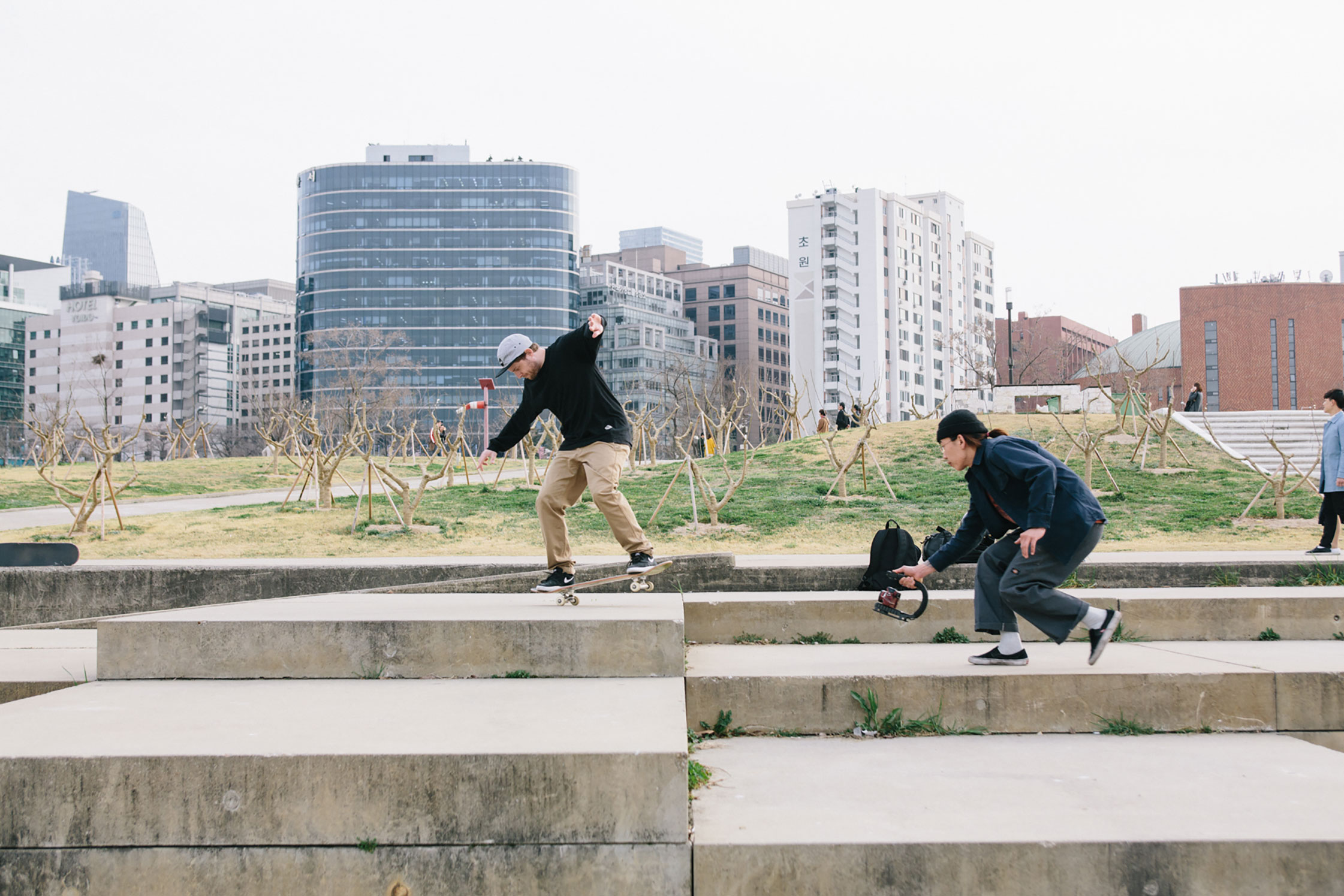In the past few years, Seoul has become a melting pot of many nationalities that contribute to the city’s vibrance. Expats come and go, but only a fraction of them choose to settle. Among them is Jin Yob Kim, editor-in-chief of the quarterly skateboarding magazine The Quiet Leaf.
Seoul’s eclectic character becomes evident as one wanders through the bustling streets: local elderly women selling vegetables and grains on the street, businessmen getting wasted on Soju (a strong rice liquor typical of Korea), to hipsters sipping frappuccinos and wealthy Gangnam elite driving Porsches. Born and raised in Germany, Jin Yob grew up in a Korean household taking photos and skating around his neighborhood. After falling in love with Seoul, he decided to make the move and has been living here ever since. Now a fixture in the Seoul skate scene, The Quiet Leaf is a beautifully curated publication that explores the world of skating as well as photography, music, and art. Each issue focuses on a different city and is trilingual: written in Korean, English and the local language. We linked up with Jin Yob to talk about his daily grind, the magazine and his favorite spots in Seoul while pushing through the city.




“The current skateboarding scene in Seoul is like a solid little ecosystem with great potential to grow.”
-
Tell me more about your upbringing and how you got into skating.
I grew up in a Korean household in a small industrial town in Germany. Growing up in Germany was great, but things weren’t always easy. I sometimes felt like I didn’t fit in, but I made some of my best friends there. Skateboarding led me through these times of confusion and doubt. I was a kid when I first watched the movie Gleaming the Cube, starring Christian Slater. Not long after that I got my first skateboard. Funnily enough, in the movie, Christian Slater has an adopted Asian brother who kicks off the plot. It’s a movie that revolves around identity, family and how skateboarding becomes a means for him to deal with these things. This movie resonated with me on so many levels.
Soon after that, I picked up my first TWS mag and absorbed every word of it. I would watch videos like Trilogy, Mouse and Modus on repeat and study the tricks. The famous skate parts, the songs, the board graphics, the fashion, but also film and photography have influenced the way I perceive the world and have enabled me to develop my own personal taste and style.
-
What led you to make the move to Seoul?
After high school, I had been visiting Korea quite frequently and made a lot of good friends here. Bit by bit, I started building a life here that became more productive than in Germany. After completing my studies, it was a natural decision to move to Seoul. I really enjoy life in the city. Seoul is a huge city that has different areas with different characteristics and demographics. It takes a while to get to know the city and to find out where to go and what to do, but once you get your head around it, living in Seoul is great fun. I suppose it’s not that different from other big cities, but the most intriguing aspect of Seoul is that you can find so many opportunities here. It took a while to become part of the scene, but I can easily say that the past few years have been the most exciting for me.
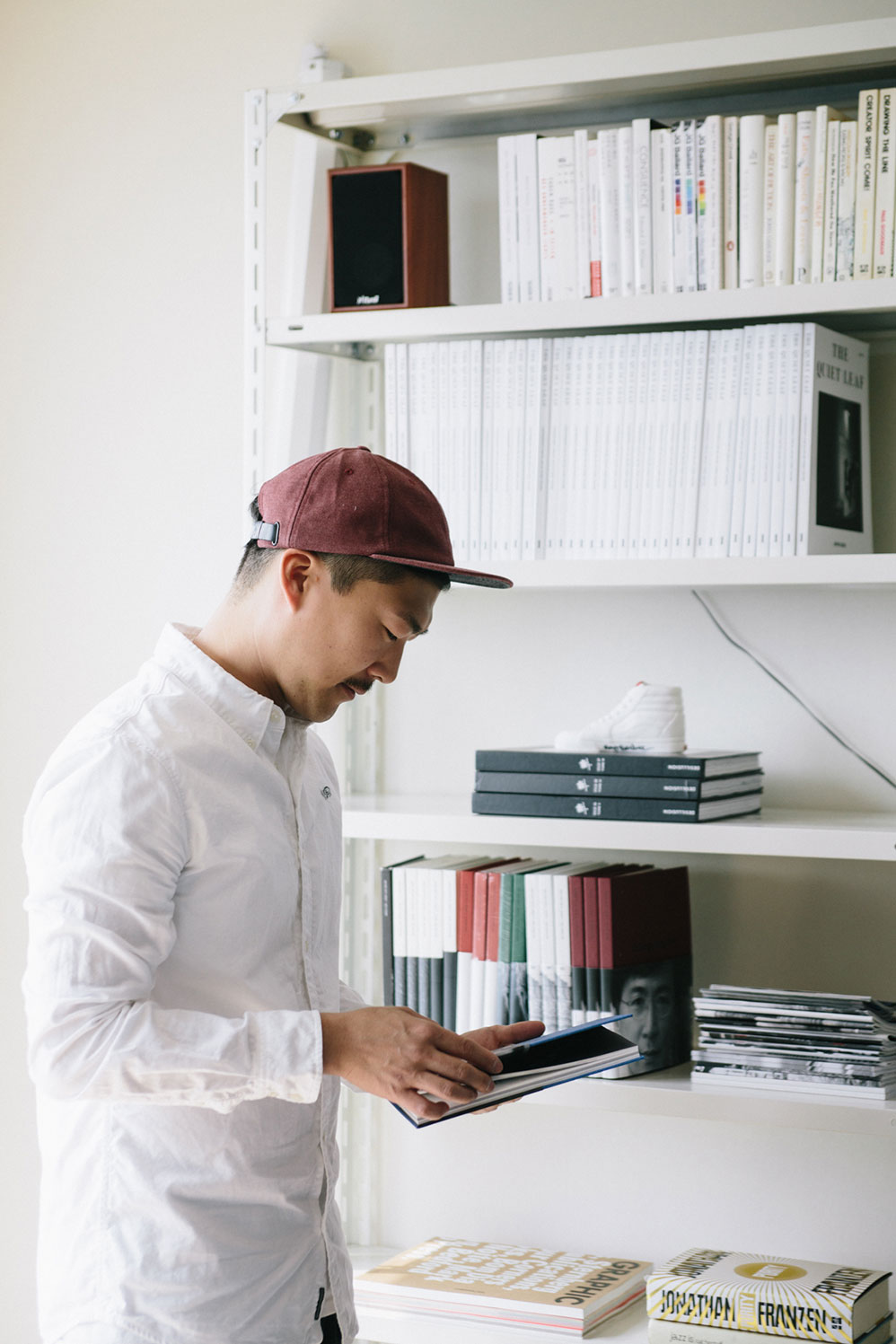

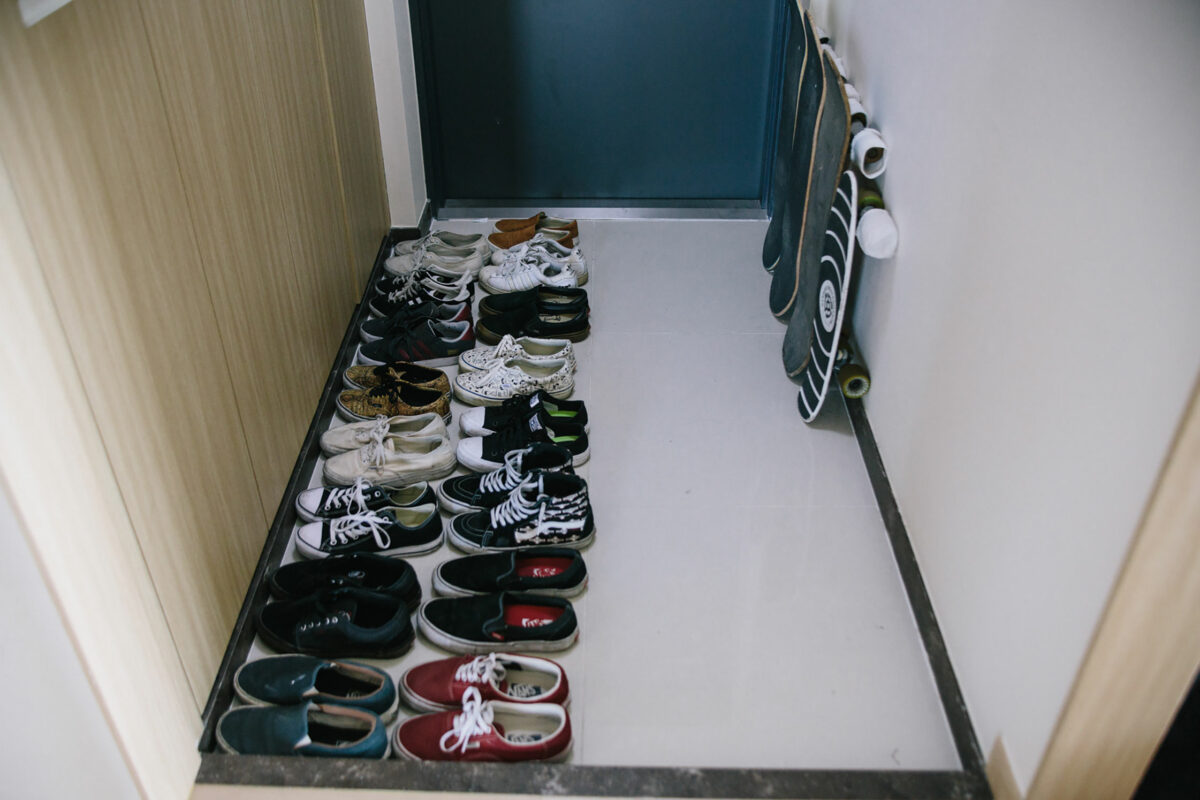

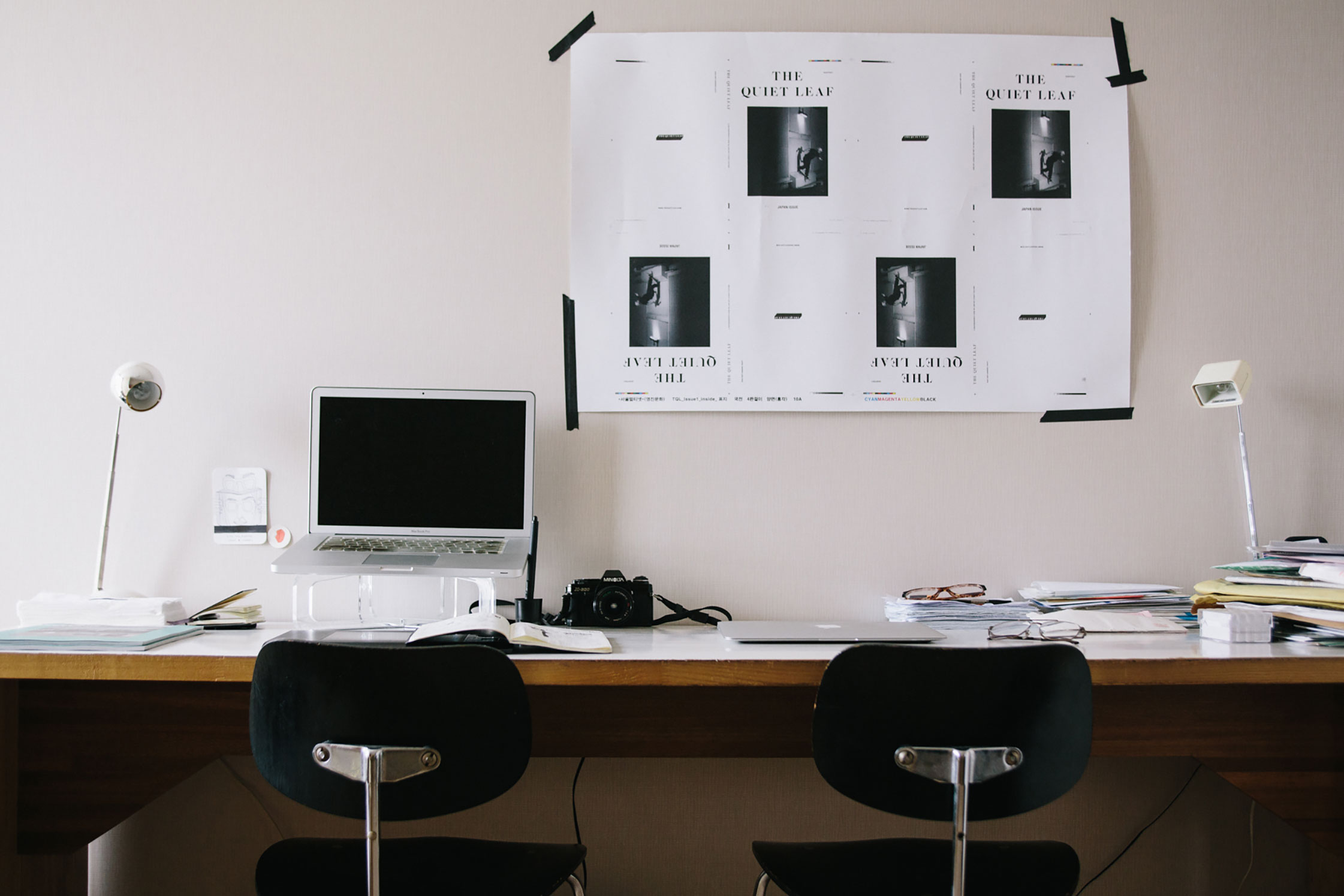
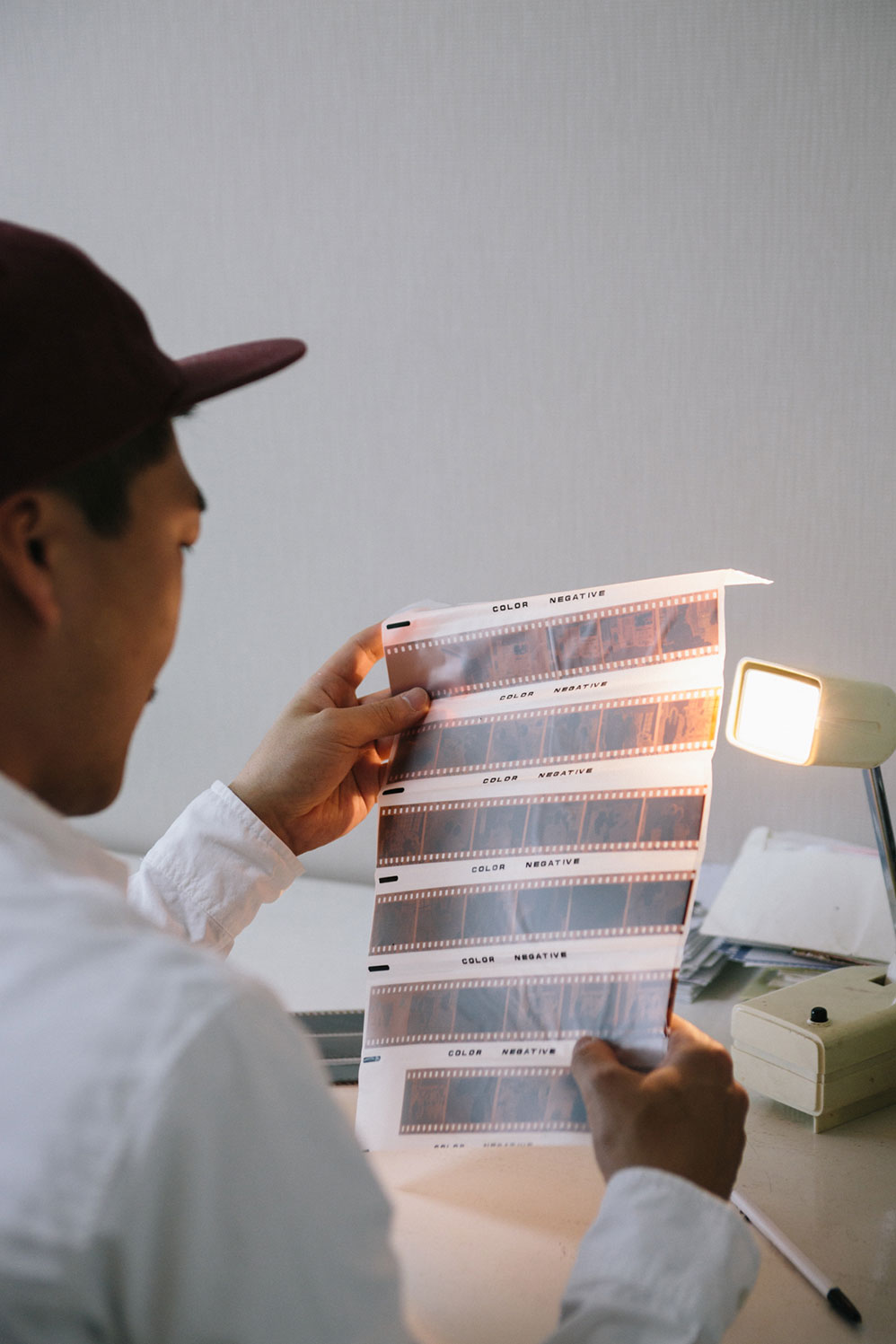

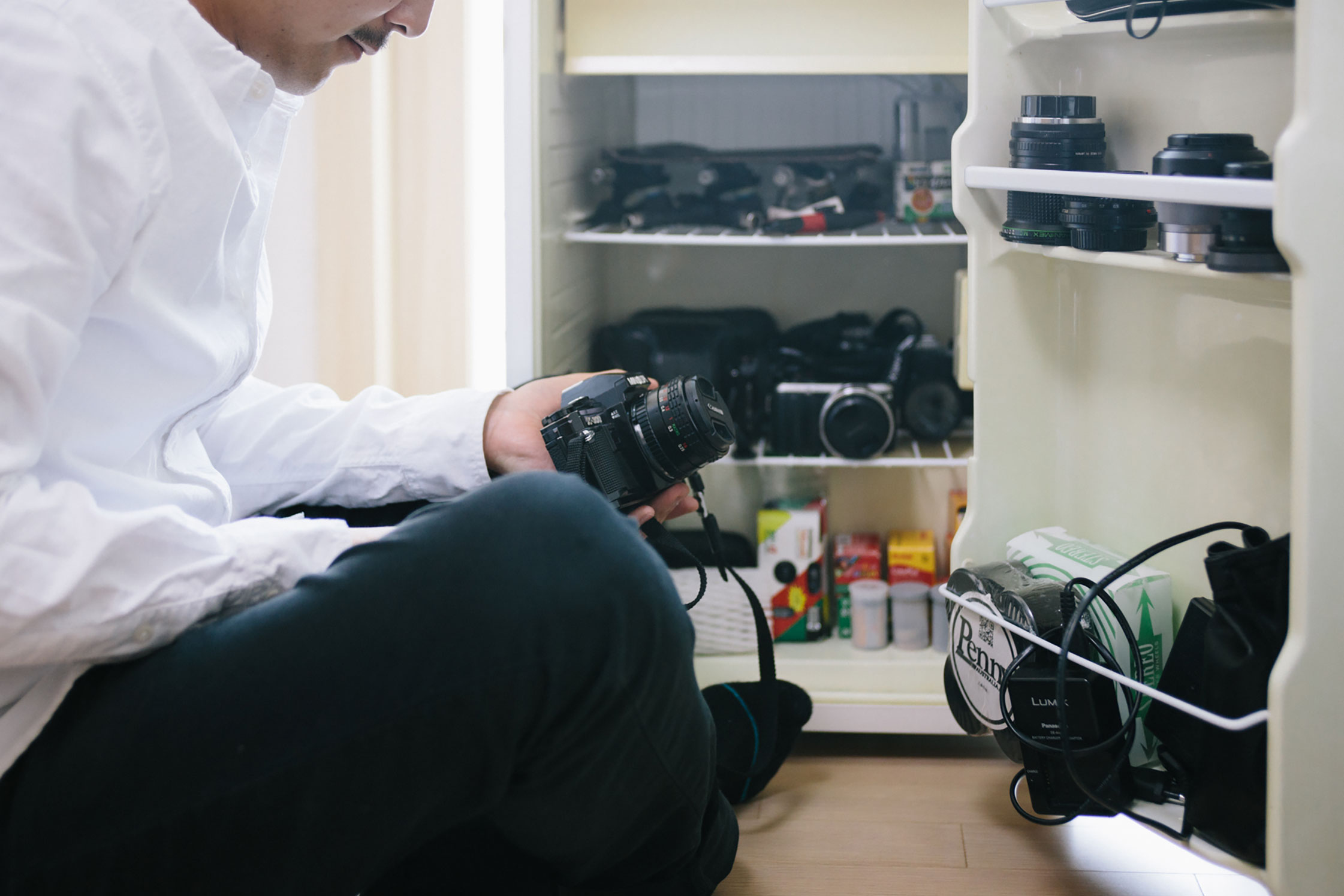
“The Quiet Leaf is a reinterpretation of my Korean name and its traditional characters.”
-
A new city means a new skateboard scene. What is the skate scene like in Seoul?
It takes a lot of time and commitment to become part of the local scene and understand all of its quirks and customs. The current scene is like a solid little ecosystem with great potential to grow. The city has all the elements it needs. Seoul has the spots, the gear and media outlets, but there are lots of barriers that prevent youths from fully realizing their potentials.
Unfortunately, due to various factors like academic pressure, social expectations and a not yet fully developed skateboard market, kids are reluctant to consider a career in skating. At this point, the scene is doing great as it is. Some brands are making significant efforts to make the scene stronger, too. I’m sure it will take off anytime soon. Until then, I hope our magazine will continue to build bridges between countries and support the scene by creating new opportunities for local skaters.
-
How did the idea of making a magazine come about? What is the reason behind the name The Quiet Leaf?
The idea stems from when I was studying in England. I used to run a small blog of the same name. It was just a personal project, sort of like a journal. I wrote a post every day for three years straight. I posted some writing, photos, music, arts and some other things—all elements that The Quiet Leaf embodies. The name itself is a reinterpretation of my Korean name and its traditional characters.

Printer in Chungmuro, Seoul
Our printer is located in Chungmuro, a little patch of blocks in the center of Seoul. This is where the film industry used to be centered. The first Korean movie theater was built here more than a hundred years ago. Today, it has lost some of its charm, but it is still considered a mecca for film, photography and print. What I like about this area is that the maze-like alleyways, which are filled with old stores and even older people, are very different from the super fly Gangnam area. It’s always a nice outing when we go to the printer and check up on our magazine.
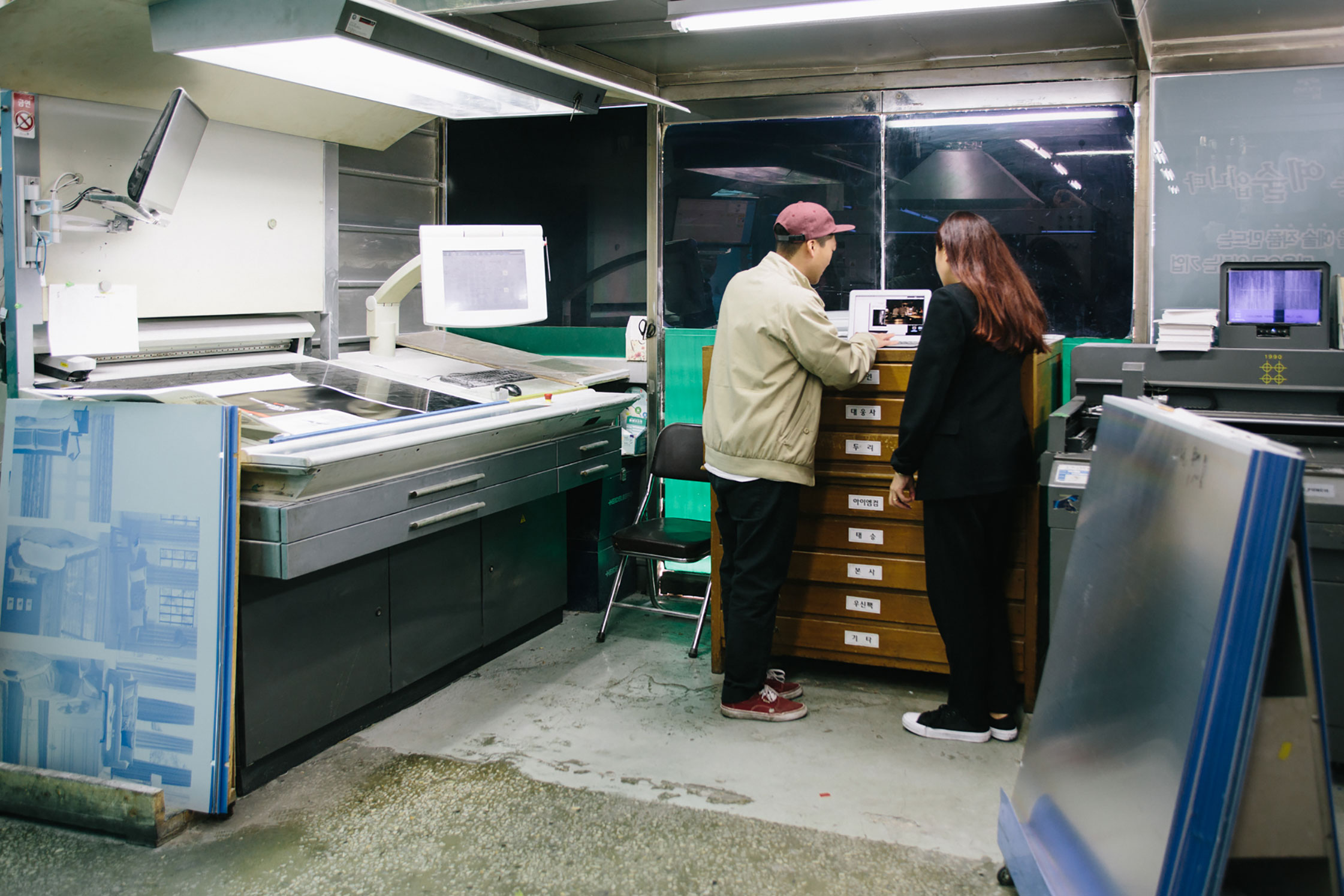

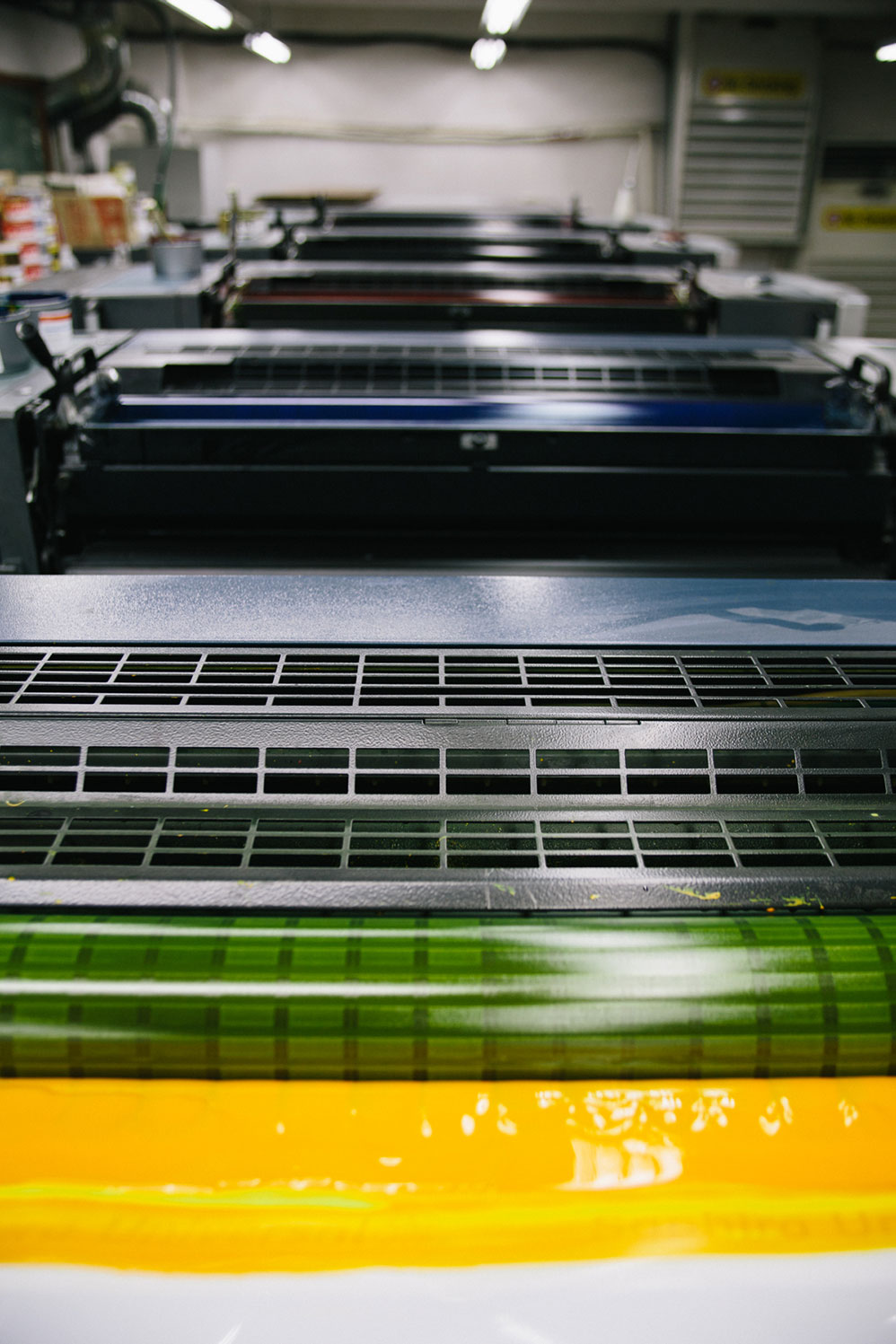

-
What makes The Quiet Leaf different from other skate magazines? Were you aiming for a more refined magazine?
The thing that makes The Quiet Leaf different is that the concept focuses on one place at a time. So far, we’ve covered Japan, France, China and the UK. What is important for us is that we don’t try to get the latest big trick on the cover or talk about the hottest issue in skateboarding. There are some great magazines that already do a great job covering that. We take our time and dig a little deeper to find out who these skaters really are. The articles I read as a kid often lacked depth. Interviews with skaters often didn’t reveal much about them. Skateboarding values have shifted in the past ten, fifteen years. It’s important to understand them as they’re the reason why we skate.
-
Photography is a major theme in your magazine. You’re a photographer as well. What goes into selecting an image or photographer?
I’m not a trained photographer. I have my old setup and a few point-and-shoot cameras, but I’m not professionally ambitious enough to refer to myself as a photographer. As for the selection, I pay close attention to the subjects, the stories and the aesthetic of photos, more so than to the level of technical expertise. However, most of our contributing photographers possess both of these qualities. I think that’s what makes the difference between a good photo and a fucking great photo.





Parc in Hannam, Seoul
Parc is run by two friends of mine who really pay attention to ingredients and traditional recipes. It’s a great place to taste authentic Korean food in Seoul. Because of its location in Hannam, it’s a great place to meet and catch up with the owners Zeemin and Mogua as well as friends who live nearby. Parc feels like being at home.



“What is important for us is that we don’t try to get the latest big trick on the cover or talk about the hottest issue in skateboarding.”
-
What would you say are your influences both in terms of skate as well as magazines?
In terms of skateboarding, I would say video tapes from the late ’90s are still my favorite source of inspiration. But in all fairness, there are a lot of skaters out there today who get me hyped as well. I’m just not a big fan of competitive skateboarding. Not that it matters a lot. All I do now is push around and do sidewalk manuals. I’m not exactly living an active skater’s life anymore, but I’m fine with that. In terms of magazines, there’s a long list of publications I’ve enjoyed for many years, from Monster Children, Lodown and Desillusion to smaller core skate mags such as A Propos, Grey, North as well as 43! I enjoy reading The Paris Review as well. I think in general, I admire people who can do multiple things at a time, and do them well, while keeping a positive attitude. People like Ray Barbee, Soy Panday, Paul Shier and Kenny Anderson inspire me a lot.
-
What’s next for you and The Quiet Leaf?
Now that our fourth issue is out, we’re looking into redesigning our website. We also have a few projects lined up for summer, including an art collaboration with Brutal Beauty in Vienna, an exhibition in London, and a skate tour documentation in China and Korea. We’re also working on our next issue!
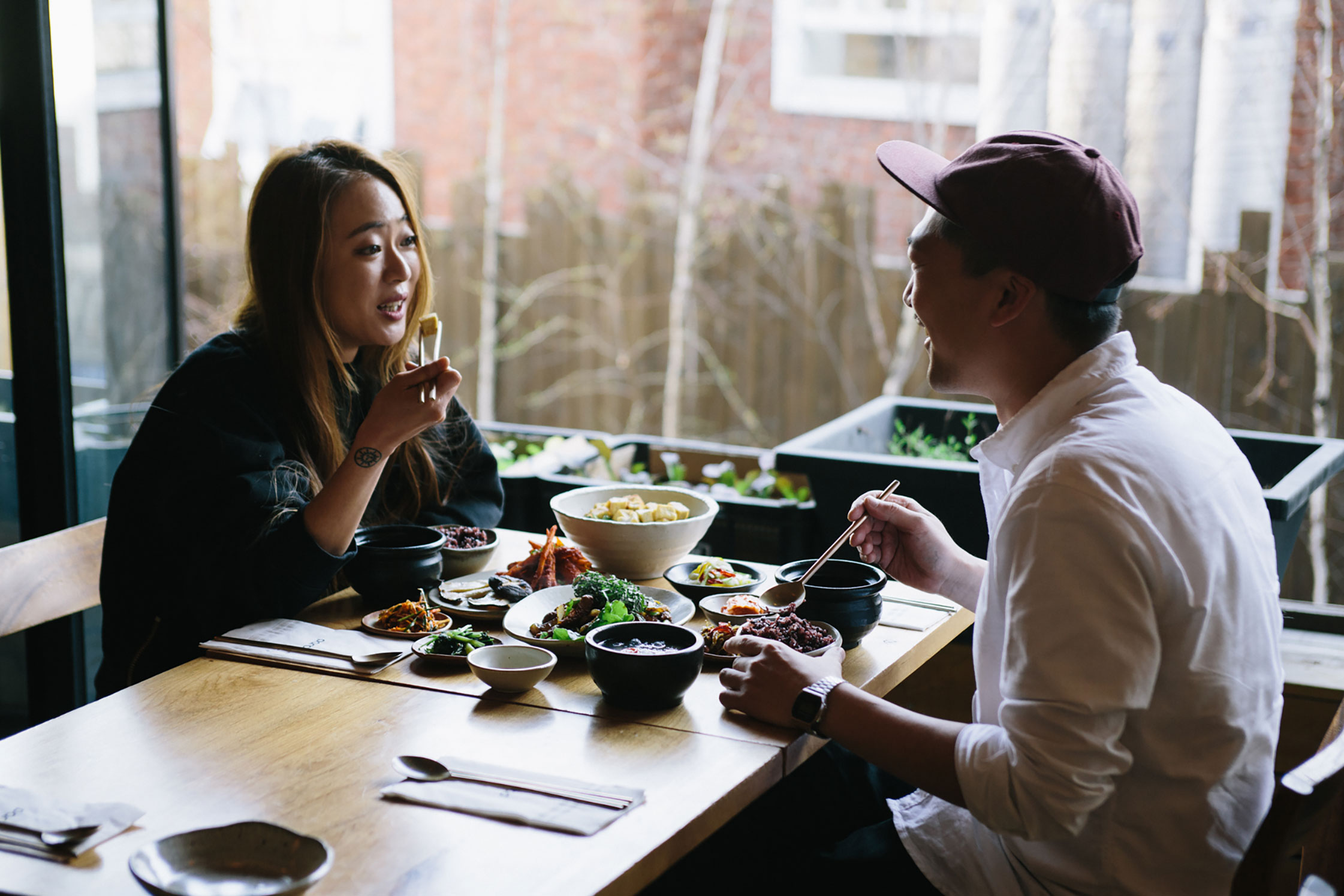

The Book Society in Jongno, Seoul
We have a number of retailers for our magazine in Seoul. One of them is called The Book Society which is located in the northern part of the city. It’s tucked in a quiet side street, next to some coffee shops and small stores. It’s a nice place to visit and spend a slow afternoon at. Whenever I go, I chat with the manager, Aram, and we talk about new publications, old Korean hip hop and exciting, new projects that the store is planning.
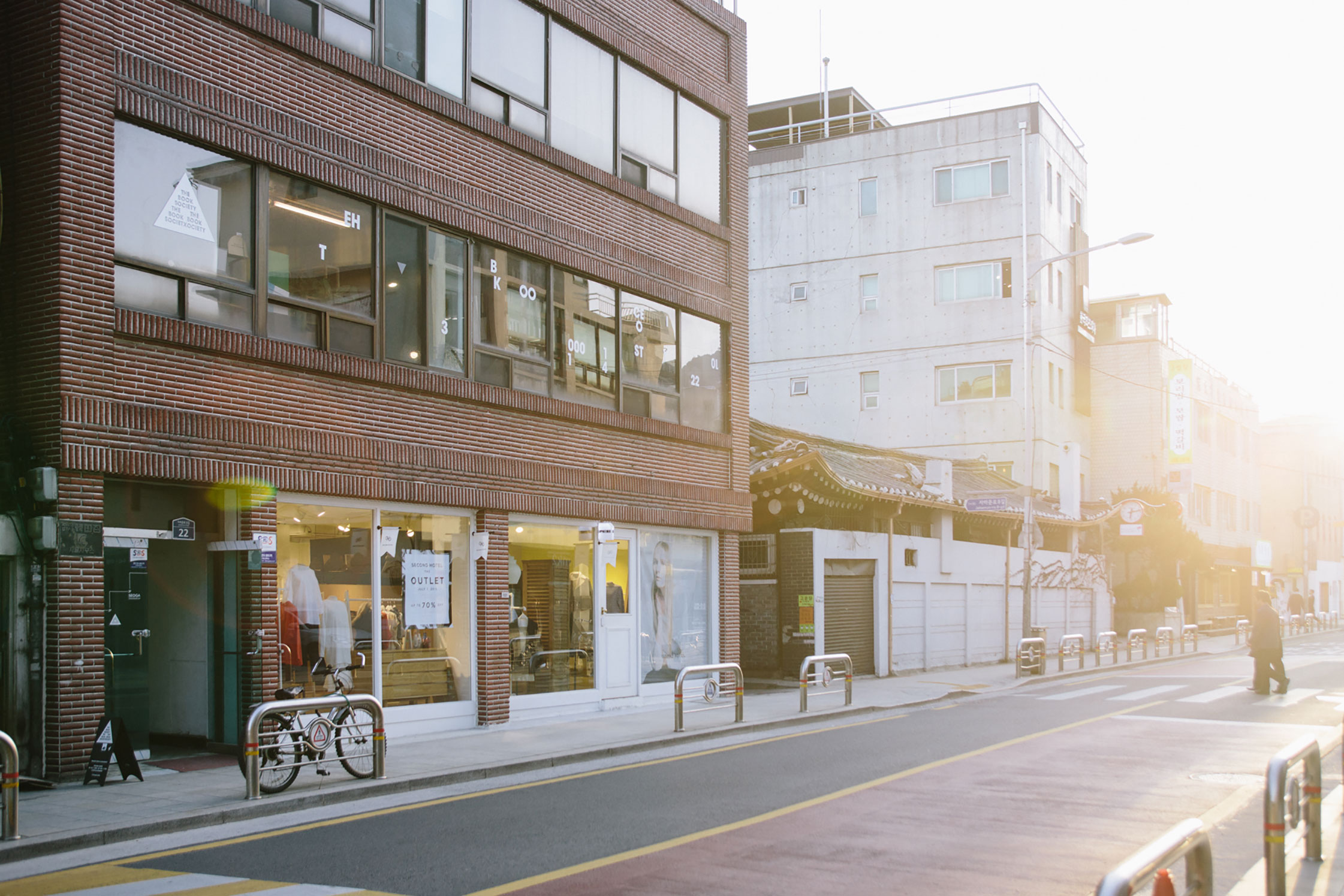

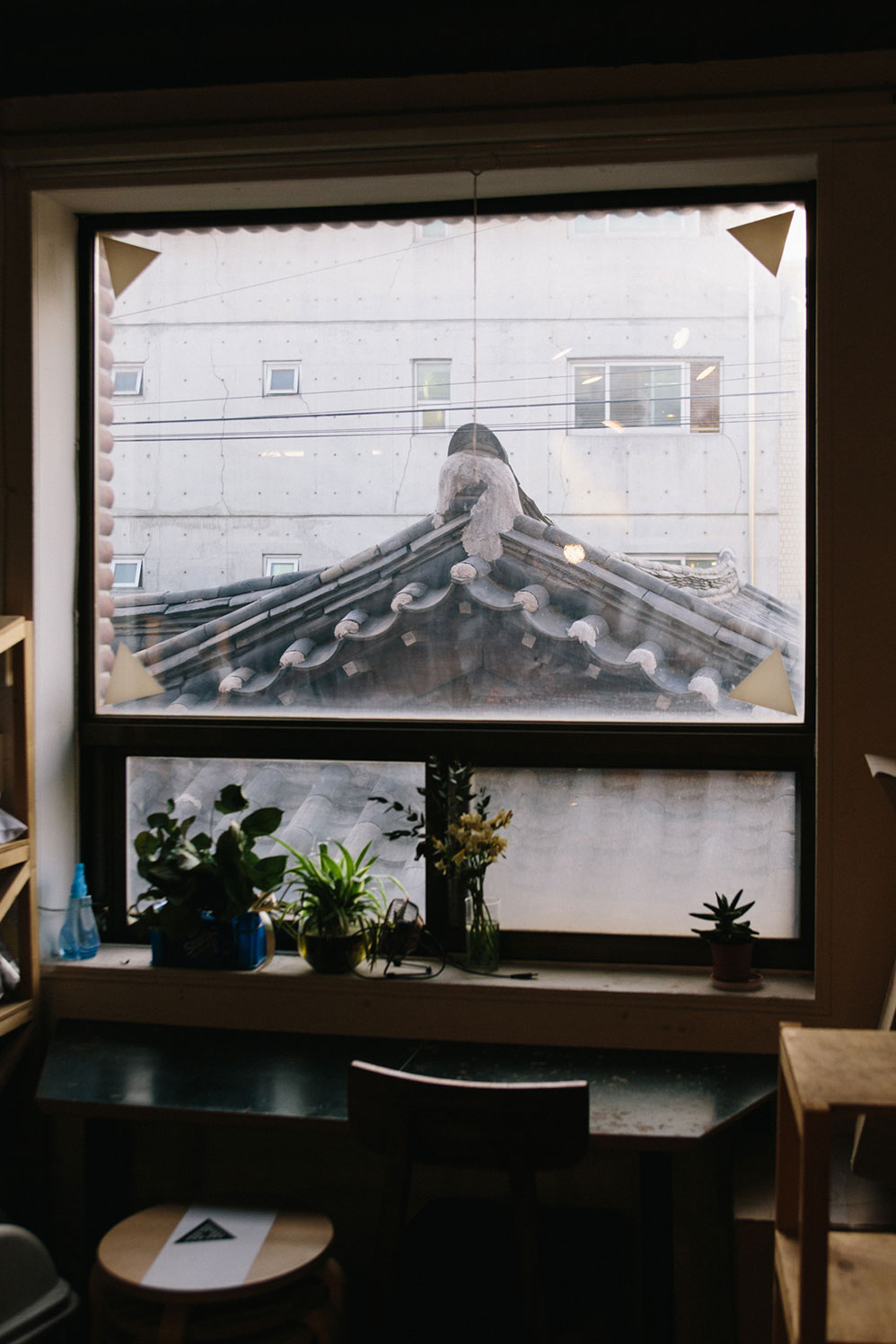




Yeouinaru, Hangang Park, Seoul
Seoul has so many great skate spots that it’s hard to pick a favorite. This spot is great for a mellow session that isn’t purpose-driven like a filming session. What’s special about the main spot in Yeouinaru is that it’s flooded for the most part of the year and only skateable during the winter months. The best part is that it’s right next to the river.



